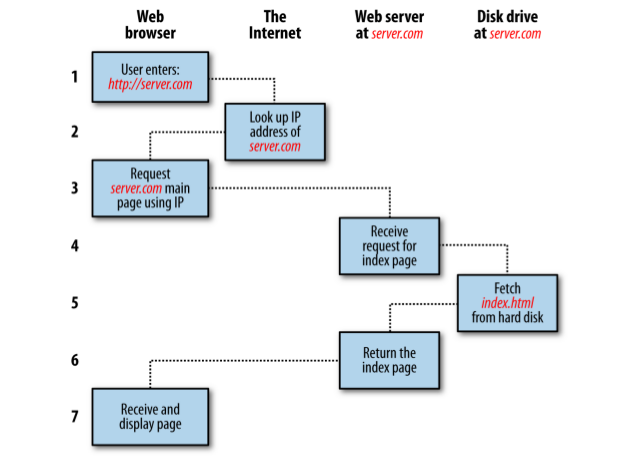Overview
CSC 342 - Web Technologies
The Internet
The Internet is the global network of interconnected computer networks.
The Internet protocol suite is a set of communications protocols that the internet uses to link devices worldwide.
The Internet is the infrastructure for many information resources and services, for example, email and file sharing.
The World Wide Web (WWW)
The World Wide Web (the Web) is one way to access information over the internet.
The Web uses Uniform Resource Locators (URLs) to identify resources.
The Hypertext Transfer Protocol (HTTP) is the communication protocol for the Web.
The Web uses a client-server model to access resources; the client sends a request and the server replies with a response.
The Basic Request/Response Procedure

Internet Standards
An Internet Standard is a specification of a technology or methodology applicable to the internet.
Internet standards are created by the Internet Engineering Task Force (IETF)
An Internet Standard is a Request for Comments (RFC) or set of RFCs
Process:
Internet Draft
Proposed Standard
Internet Standard
Web Standards
Web standards are technical specifications that define and describe aspects of the Web
Web standards consider the interoperability, accessibility, and usability of web pages and web sites
Web standards include:
RFCs published by the IETF
Properly formed Uniform Resource Identifiers (URIs)
Proper use of the HTTP
Recommendations published by the World Wide Web Consortium (W3C)
Markup languages (HTML)
Stylesheets (CSS)
Document Object Models (DOM)